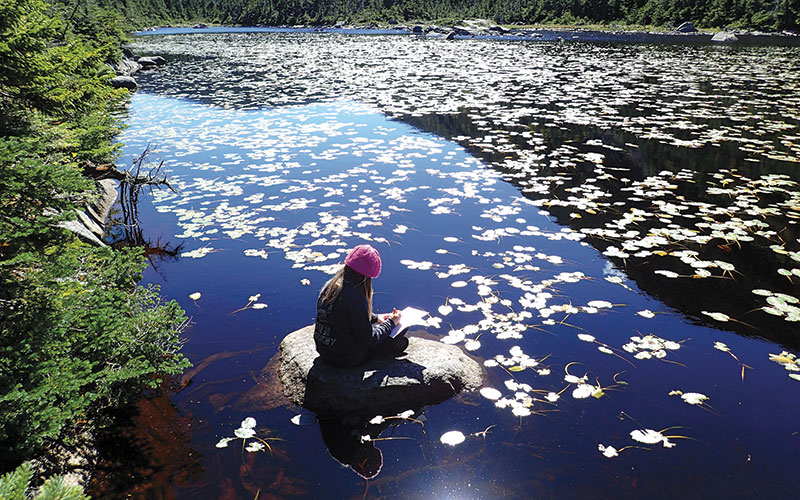

When journaling about nature, refrain from proofreading or editing; just get the words down on paper.
David Haskell compares nature observations to breathing.
“With the lungs, you have to both inhale and exhale in order to be healthy. The same is true for the mind,” the Sewanee professor of biology and environmental studies instructs his college students—including me. “We need a process of opening our senses and then of closing….We need both in order to have a well-oxygenated mind.”
When I took a class last year with Haskell, he assigned a semester-long project: Choose one spot on campus to observe and journal about it each week. At first, the assignment seemed vague and daunting. Few of us had any idea where to start. But Haskell—who has authored two books, both based on year-long periods of observation—took us outside and led us in a sensory exercise.
If you’re new to nature journaling, you can follow the same steps. First, grab a pen and a notebook and pick a spot. Next, activate your senses.
Sight
Where are you? How does the ground look in the sunlight? What is the sky up to right now? Any critters crawling around you? Record everything your eyes take in—or sketch it, if you prefer.
Sound
Close your eyes. Pay attention to the first sound you hear. Then the next one and the next. List every sound, paying attention to how they overlap and clash with each other. Make your own sounds, too: Try scratching the ground with a stick or knocking on a nearby tree.
Smell
Close your eyes again and take a deep breath in through your nose. List every scent you recognize. Try to describe the ones you don’t. Wander around your area, sniffing the things you see: the flowers, the leaves, the earth, the wood.
Touch
Run your hands along a tree’s bark, dig your fingers into the dirt, roll a stick between your palms. Can you tell the difference between plants by touch? Get to know the texture of your spot.
Taste
Take caution with this one. If you feel confident in your plant identification, go ahead and taste what you know is safe. If not, stick with your other senses.
After exploring all of the above, set a timer (Haskell recommends 20 to 30 minutes) and start to write. Refrain from proofreading or editing; just get the words down on paper. Haskell says it’s important to keep the exercise simple and not to worry about quality. Sometimes, he says, the process “leads to things that aren’t that great, but that’s all right.” Allow yourself to experiment.
For me, what started out as a chore became a weekly highlight. It felt good to simply sit and soak it all in. I realized how much beauty and action I had missed while walking around campus. By the end of the year, I felt more plugged in to the space around me. Haskell says observing makes us better members of our environmental community “because we’ve actually listened.”